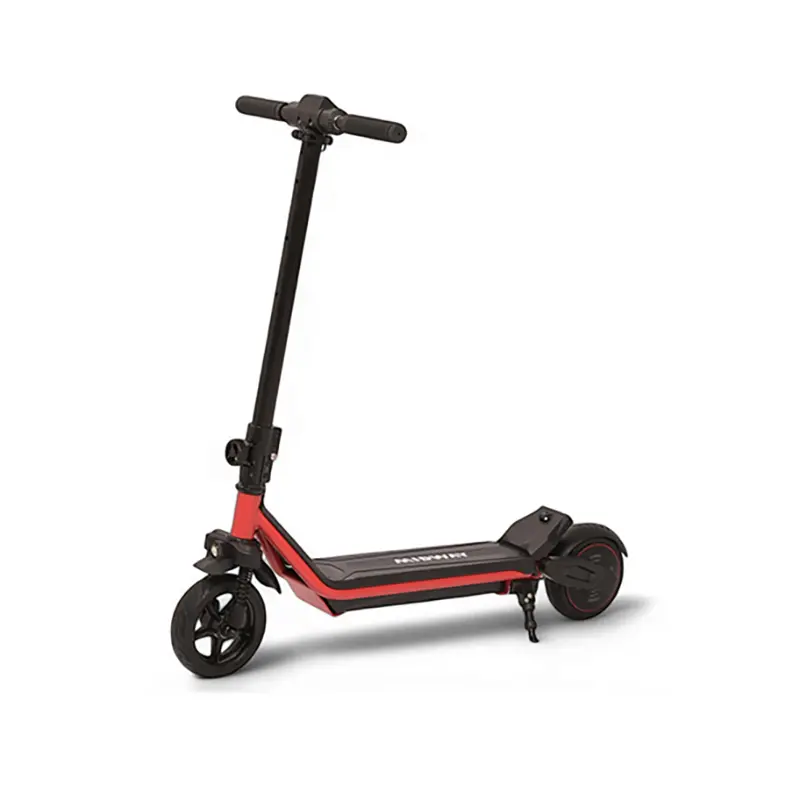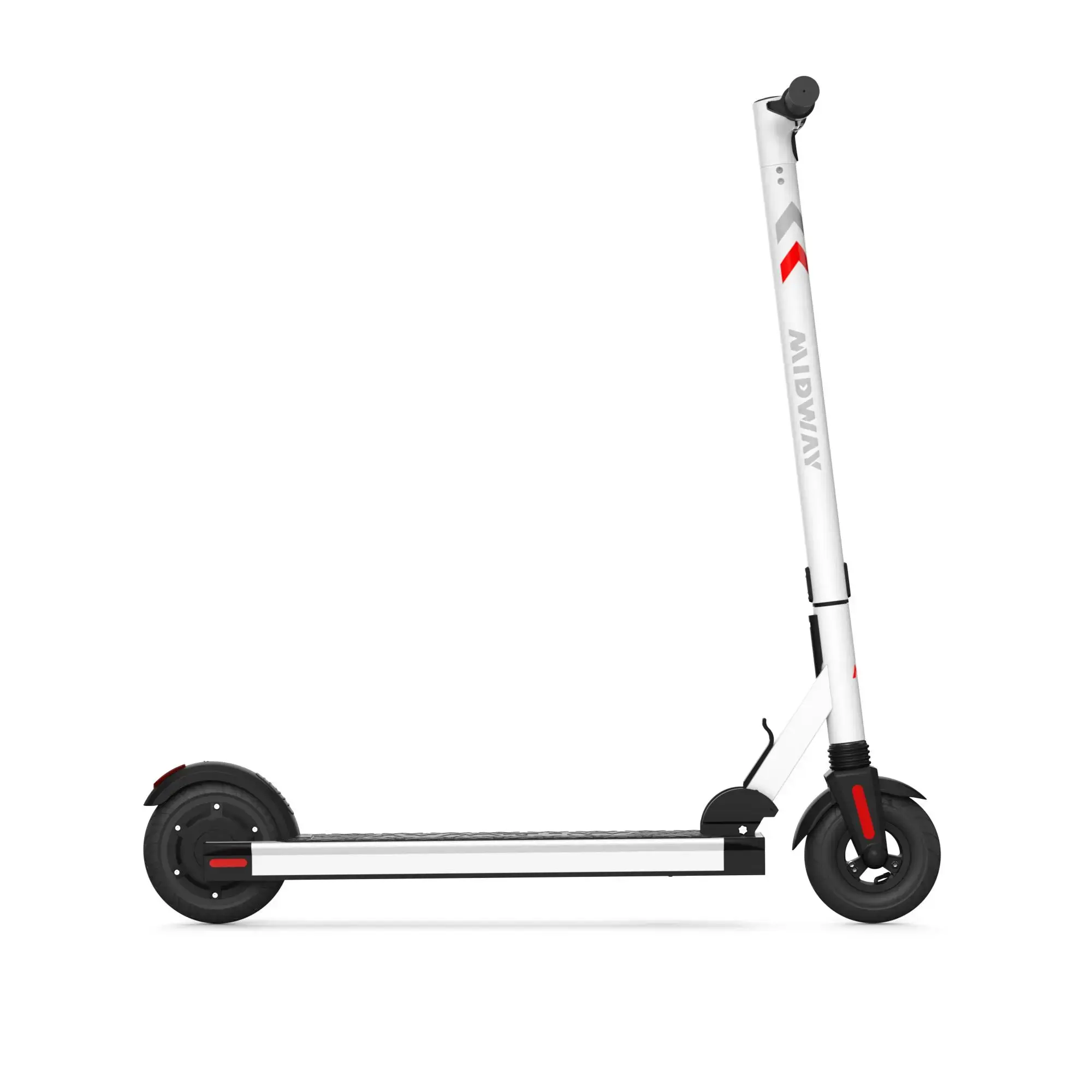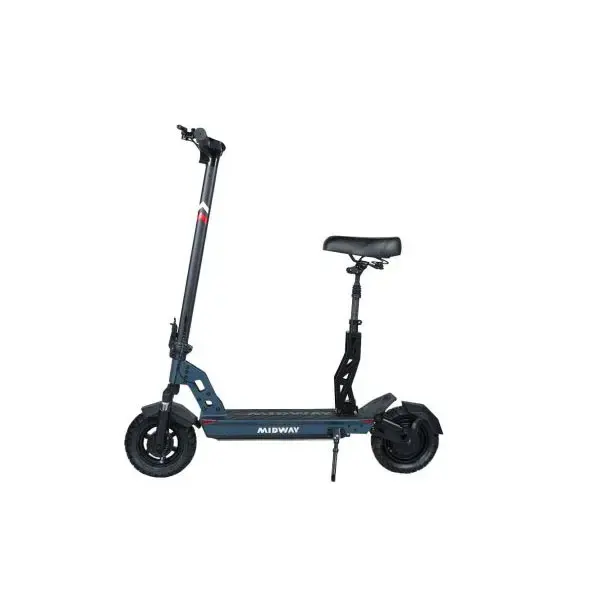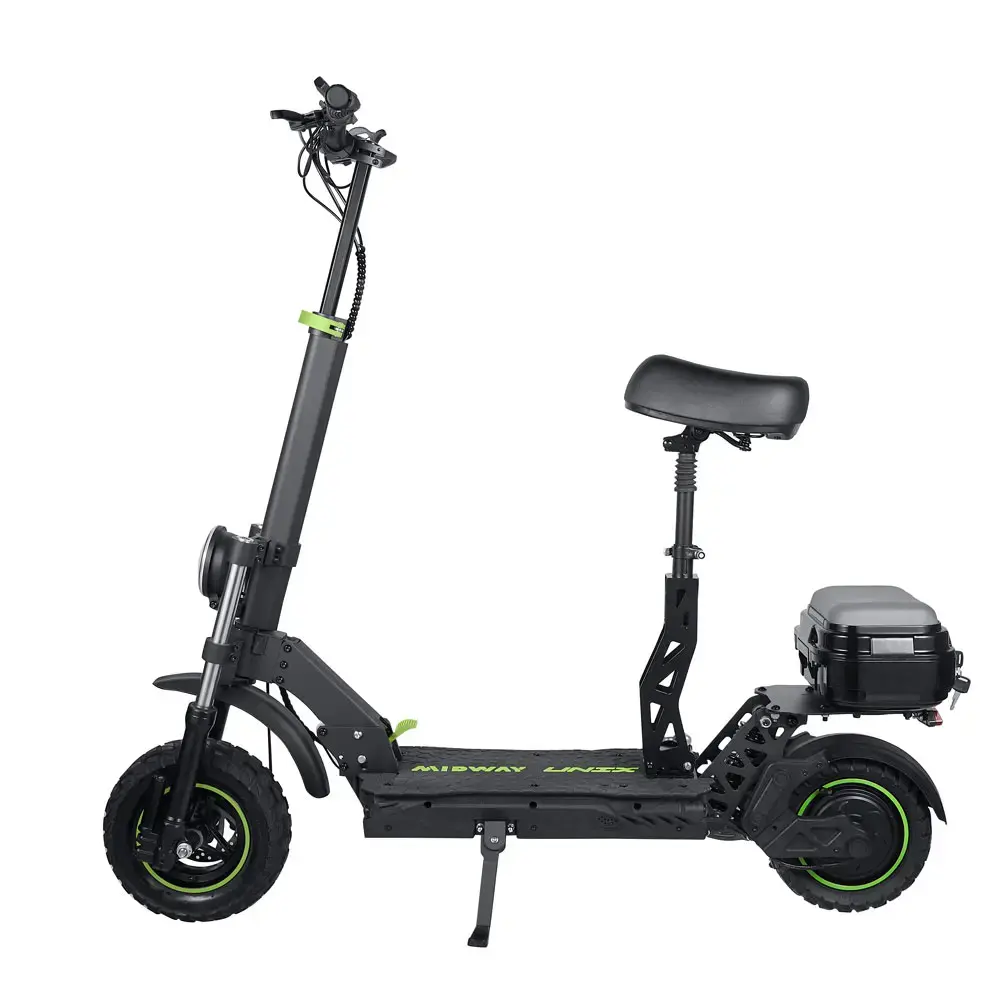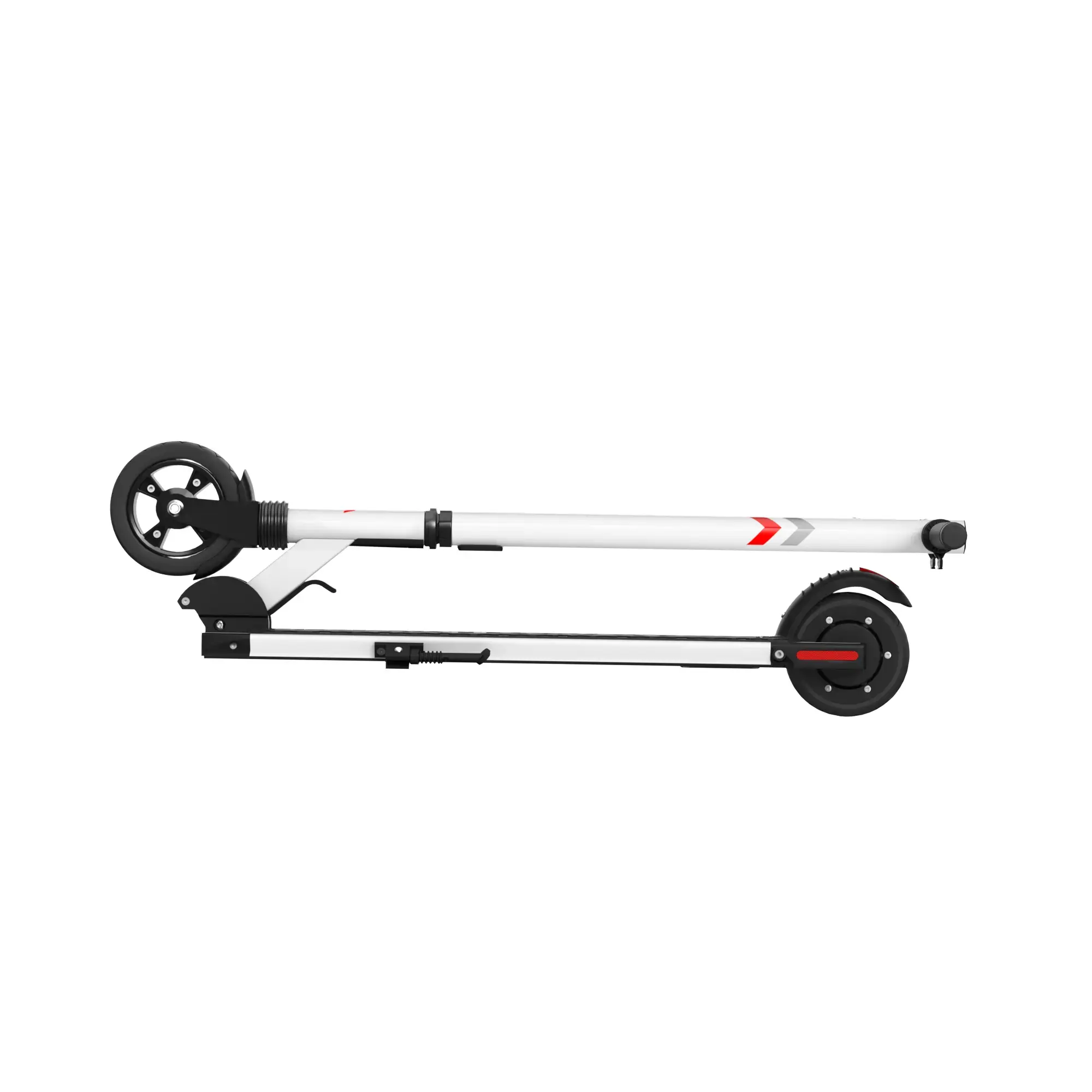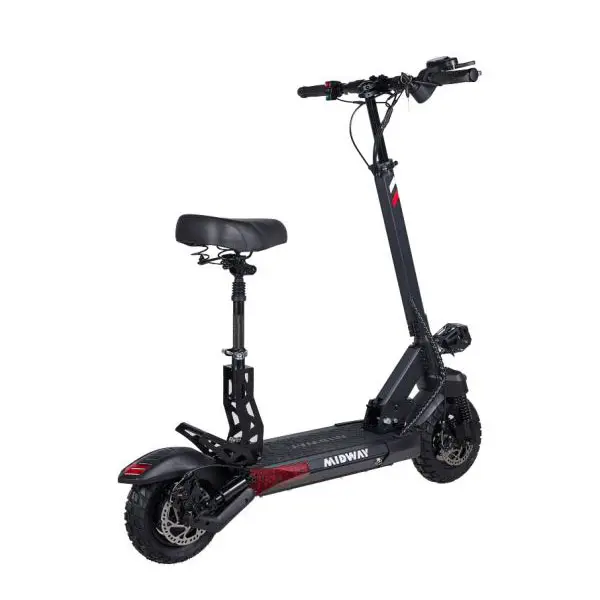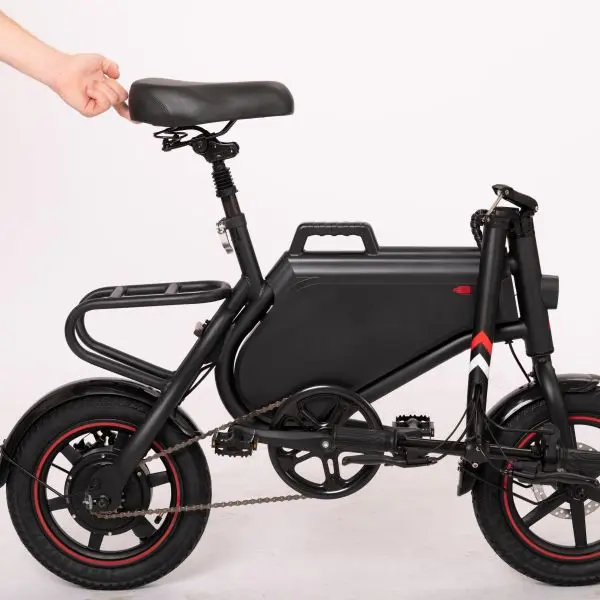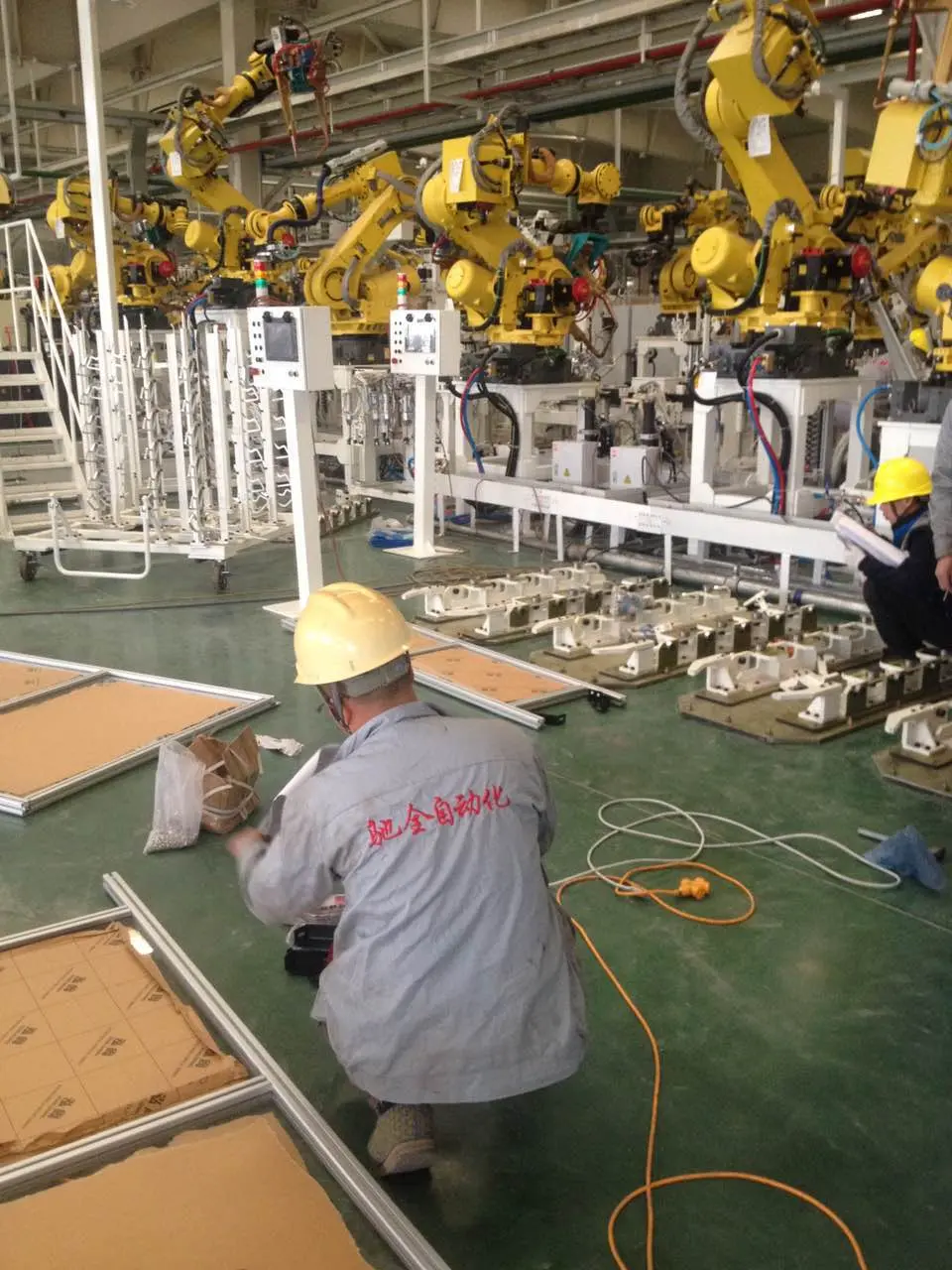What are the special technical requirements for welding electric scooter frames?
1. Requirements for welding material selection
1.1 Metal material matching
Electric scooter frames are usually made of aluminum alloy or steel. Aluminum alloy frames are widely used due to their light weight and good corrosion resistance, while steel frames are favored for their high strength and cost-effectiveness.
Aluminum alloy welding: The welding of aluminum alloys requires special attention to material matching. For example, 6061 aluminum alloy is one of the commonly used materials for electric scooter frames. When welding it, it is necessary to use welding wires with similar composition to the parent material, such as 4043 or 5356 welding wires. 4043 welding wire has good welding performance and crack resistance, while 5356 welding wire performs better in strength. According to the standards of the American Welding Society (AWS), the tensile strength of 4043 welding wire is about 180 MPa, while the tensile strength of 5356 welding wire can reach 250 MPa. Selecting the right welding wire can ensure the strength and durability of the welded joint and avoid welding defects and structural failure caused by material mismatch.
Steel welding: For steel frames, commonly used materials include Q235 and Q345. The yield strength of Q235 steel is 235 MPa, while the yield strength of Q345 steel is 345 MPa. When welding, it is necessary to select appropriate electrodes or wires according to the strength grade of the steel. For example, for Q235 steel, E43 series electrodes are usually selected, while for Q345 steel, E50 series electrodes are required. The chemical composition and mechanical properties of these electrodes match those of the parent material, which can ensure the strength and toughness of the welded joint. In addition, welding process parameters such as welding current, voltage and welding speed also need to be precisely adjusted according to the thickness and material of the steel to avoid welding defects such as pores, slag inclusions and lack of fusion.
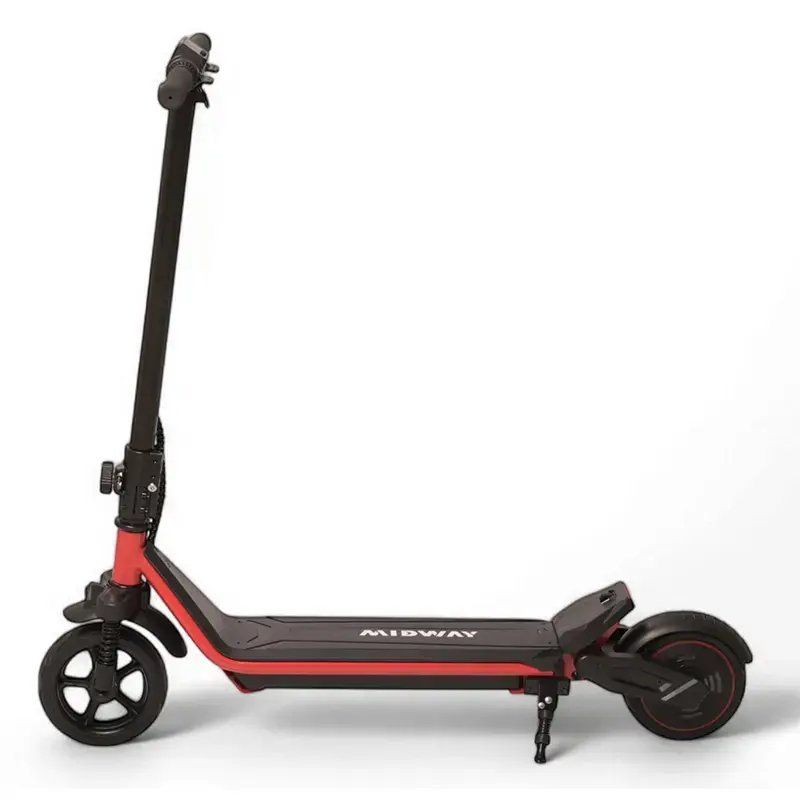
2. Welding process parameter requirements
2.1 Welding current and voltage control
Welding current and voltage are key parameters that affect welding quality. For the welding of electric scooter frames, different materials and thicknesses require precise control of current and voltage.
Aluminum alloy welding: When using gas shielded welding (such as MIG welding), the current is usually controlled at 150-250A and the voltage is between 20-25V. For example, for 6061 aluminum alloy with a thickness of 3mm, the welding current is recommended to be around 180A and the voltage is around 22V. Studies have shown that when the current and voltage exceed this range, the heat affected zone of the weld joint will increase, resulting in a decrease in material properties, such as a decrease in tensile strength of about 15%. In addition, excessive current may also cause excessive weld penetration and increase the risk of cracks.
Steel welding: For Q235 steel, the current is generally 100-150A and the voltage is 20-22V during manual arc welding. For Q345 steel, due to its higher strength, the welding current needs to be appropriately increased to 120-180A and the voltage is 22-24V. Experimental data show that when the welding current is lower than 100A, the weld penetration is insufficient, which may lead to unfused defects; when the current exceeds 180A, the weld surface roughness increases, and undercutting is prone to occur, affecting the welding quality.
2.2 Welding speed adjustment
The welding speed directly affects the forming and quality of the weld. A reasonable welding speed can ensure the uniformity and strength of the weld.
Aluminum alloy welding: The welding speed is generally controlled at 30-60mm/s. For example, for an aluminum alloy frame with a thickness of 2mm, the welding speed is recommended to be around 40mm/s. Studies have shown that when the welding speed is lower than 30mm/s, the weld pool stays for too long, which can easily lead to overheating of the weld, coarsening the material grains and reducing its fatigue resistance by about 20%. When the welding speed exceeds 60mm/s, the weld is not filled enough, which may lead to insufficient weld strength and uneven surface.
Steel welding: For Q235 steel, the welding speed is recommended to be 20-40mm/s, while for Q345 steel, the welding speed can be appropriately reduced to 15-30mm/s. This is because the heat-affected zone of Q345 steel is more sensitive. Too fast welding speed will cause the heat-affected zone to cool too fast, produce hardened structure, and reduce the toughness of the welded joint. Experiments show that when the welding speed is lower than 15mm/s, the width of the heat-affected zone of the weld increases, the hardness of the material increases, and the brittleness increases; when the welding speed exceeds 40mm/s, the weld penetration is insufficient, and defects such as incomplete fusion are prone to occur.
3. Welding equipment and tooling requirements
3.1 Precision positioning tooling design
In the welding process of the electric scooter frame, precise positioning tooling is one of the key factors to ensure welding quality.
Positioning accuracy requirements: The various components of the frame need to be precisely aligned to ensure the overall structural strength and stability after welding. For example, when welding the main beam and support rod of the frame, the positioning accuracy must reach ±0.5mm. This is because the frame will be subjected to various dynamic loads during use, such as bumps and steering forces during riding. If the positioning accuracy is insufficient, the welded joints will be unevenly stressed, increasing the risk of structural failure. According to relevant research, the fatigue life of the welded joints can be extended by about 10% for every 0.1mm increase in positioning accuracy.
Key points of tooling design: The tooling needs to be customized according to the specific structure and size of the frame. For example, for aluminum alloy frames, due to their light weight and easy deformation, the tooling needs to have sufficient rigidity to fix the components. At the same time, the clamping force of the tooling also needs to be precisely controlled to avoid damage to the frame material. Generally speaking, the clamping force should be controlled between 20%-30% of the yield strength of the material. For steel frames, the tooling needs to consider the thermal expansion characteristics of the material and reserve appropriate gaps during welding to prevent component deformation and welding defects caused by thermal expansion.
Automated positioning system: In order to improve production efficiency and positioning accuracy, some advanced electric scooter manufacturers have adopted automated positioning systems. For example, laser positioning technology or visual recognition systems can be used to quickly and accurately position frame components. These systems can complete positioning within a few seconds, and the positioning accuracy can reach within 0.1mm. Compared with the traditional manual positioning method, the efficiency of the automated positioning system has increased by about 50%, while significantly reducing the positioning error caused by human factors.
3.2 Welding equipment stability
The stability of welding equipment directly affects the continuity of the welding process and the stability of welding quality.
Equipment stability standard: Welding equipment needs to maintain stable current, voltage and wire feeding speed during long-term operation. For example, when continuously welding aluminum alloy frames, the fluctuation range of welding current should be controlled within ±5A, and the voltage fluctuation range should be within ±1V. This is because the instability of current and voltage will lead to uneven weld penetration, affecting the strength and durability of the welded joint. According to actual production data, when the current fluctuation exceeds ±5A, the deviation of weld penetration can reach 10%, which may lead to welding defects such as lack of fusion and the generation of pores.
Equipment maintenance and calibration: Regular maintenance and calibration of welding equipment are key measures to ensure equipment stability. For example, a comprehensive maintenance and calibration of welding equipment is performed once a quarter, including checking key components such as welding power supply, wire feeding system and cooling system. Studies have shown that the failure rate of welding equipment that has been regularly maintained and calibrated can be reduced by about 30%, and the stability of welding quality can be improved by about 20%. In addition, the software system of the equipment also needs to be updated regularly to adapt to new welding process requirements and improve the intelligence level of the equipment.
Equipment selection and adaptability: Choosing the right welding equipment is crucial to ensuring welding quality. For the welding of electric scooter frames, it is necessary to select appropriate welding methods and equipment according to the frame material and welding process requirements. For example, for aluminum alloy frames, gas shielded welding (such as MIG welding or TIG welding) is usually used, and welding equipment with high-precision current and voltage control needs to be selected. For steel frames, manual arc welding or semi-automatic gas shielded welding are also common welding methods, and the equipment needs to have good wire feeding stability and welding parameter adjustment functions. According to market research data, the price range of equipment suitable for welding electric scooter frames is between 50,000 yuan and 200,000 yuan, and the performance and stability of the equipment are proportional to its price.
4. Welding quality inspection requirements
4.1 Appearance quality standards
The appearance quality of the electric scooter frame welding directly affects its aesthetics and some structural performance. The following are specific standards:
Weld shape and size: The weld should be full and uniform in shape, with a smooth surface transition. For the weld of the electric scooter frame, the width is generally controlled at 3-6mm, and the excess height (the part of the weld that is higher than the surface of the parent material) is controlled at 0-3mm. For example, if the weld is too wide or too high, it will not only affect the appearance, but also increase the local stress concentration of the structure and reduce the fatigue life; while the weld is too narrow or too low, it may lead to insufficient welding strength.
Bite edge and lack of fusion: There should be no obvious bite edge phenomenon on the edge of the weld, and the bite edge depth should be less than 0.5mm. Lack of fusion is one of the common defects in welding, requiring complete fusion between the weld and the parent material, without any unfused area. According to relevant research, the stress concentration factor at the bite edge can reach 3-5 times that of a normal weld, and the unfused area is often the initiation source of cracks, which will significantly reduce the bearing capacity of the welded joint.
Porosity and slag inclusion: Porosity and slag inclusion should be avoided as much as possible on the surface and inside of the weld. The diameter of the pore should not be greater than 1.5mm, and the number of pores should not exceed 2 per 100mm weld length; the length of the slag inclusion should be less than 2mm. Porosity will reduce the density and strength of the weld, and slag inclusion will affect the toughness of the weld, both of which may cause early failure of the welded joint during use.
4.2 Internal quality inspection method
In order to ensure the internal quality of the welded joints of the electric scooter frame, a variety of non-destructive testing methods are required:
Radiographic testing (RT): X-rays or gamma rays penetrate the weld to form an image to detect internal defects. For key welds of the electric scooter frame, such as the connecting welds between the main beam and the support rod, the sensitivity of radiographic testing is required to be able to detect pores with a diameter of 0.5mm and cracks with a length of 1mm. Studies have shown that radiographic testing has high accuracy and can detect subtle defects inside the weld, but the inspection cost is relatively high and there is a certain radiation risk to the operator.
Ultrasonic testing (UT): Use the propagation characteristics of ultrasonic waves in the weld to detect internal defects. Ultrasonic testing has a high sensitivity to cracks, lack of fusion and other defects, and can detect defects with a depth of more than 0.2mm. For example, when testing the thick plate welds of the electric scooter frame, ultrasonic testing can quickly locate the position and size of the defects, and the detection process is non-destructive and fast, which is suitable for batch detection of large welds. However, ultrasonic testing requires a high level of technical skills from the operator, and the qualitative characterization of defects is not intuitive enough.
Magnetic particle testing (MT): Mainly used to detect defects on the surface and near the surface of the weld, such as cracks, lack of fusion, etc. For the welds of the electric scooter frame, magnetic particle testing can detect surface cracks with a width of more than 0.05mm. This method is simple to operate, low in cost, and has a fast detection speed. It is suitable for rapid detection of the weld surface, but it is only applicable to ferromagnetic materials and cannot be used for non-ferromagnetic materials such as aluminum alloy frame welds.
Penetrant testing (PT): The penetrant fluid penetrates into the open defects on the weld surface, and then the developer is used to display the defect position for detection. Penetrant testing can detect surface opening defects with a width of more than 0.01mm, such as microcracks, pores, etc. It is suitable for surface inspection of welds of various materials, especially for surface defects of non-ferromagnetic materials, but it cannot detect internal defects, and the detection process requires the use of chemical reagents, which has certain requirements on the environment.
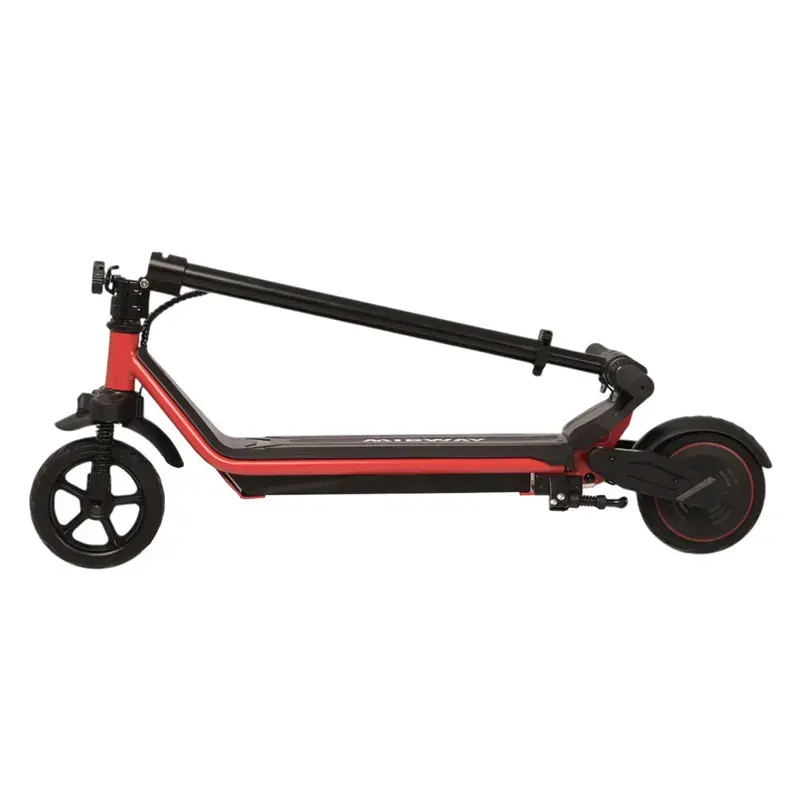
5. Qualification requirements for welding personnel
5.1 Professional skills training
Personnel who weld electric scooter frames need to receive systematic and professional skills training to ensure welding quality and safety.
Welding theory training: Welders should master the basic welding theory, including the principles, characteristics and application scope of different welding methods (such as MIG welding, TIG welding, manual arc welding, etc.). For example, understand the influence of the droplet transfer mode of MIG welding on the weld formation and quality, and how to ensure the welding quality by precisely controlling the current and arc when welding aluminum alloys in TIG welding. The training content should also cover the performance and selection of welding materials (welding wire, welding rod, shielding gas, etc.), as well as the mechanism of the effect of welding process parameters (current, voltage, welding speed, etc.) on welding results. According to the survey, the welding quality pass rate of welders who have undergone systematic theoretical training can be increased by about 15%.
Practical operation skills training: After theoretical training, welders need to conduct a lot of practical operation training. Taking aluminum alloy frame welding as an example, it is necessary to master how to correctly set the welding equipment parameters, such as how to accurately adjust the current, voltage and wire feeding speed of MIG welding according to the thickness and shape of the weld when welding 6061 aluminum alloy. At the same time, it is also necessary to practice the arc starting and arc ending skills of the weld, as well as how to control the welding speed and welding angle to ensure the uniformity and quality of the weld. For steel frame welding, it is necessary to master the correct way to hold the welding rod and the rod feeding method during manual arc welding, as well as how to avoid welding defects such as pores, slag inclusions and unfusion. Practical operation skills training usually needs to be carried out at a professional welding training base. By simulating actual production scenarios, welders can accumulate experience in practice and improve their operation skills. According to statistics, welders who have undergone professional practical operation skills training can increase their welding efficiency by about 20% and reduce their welding defect rate by about 10%.
Quality inspection skills training: Welders must not only be able to weld, but also master the basic methods of welding quality inspection. The training content includes appearance quality inspection standards, such as the identification and judgment of defects such as weld shape, size, undercut, unfusion, pores and slag inclusions. At the same time, it is necessary to understand the basic principles and operating steps of non-destructive testing methods (such as radiographic testing, ultrasonic testing, magnetic particle testing and penetration testing) so that they can cooperate with quality inspection personnel to conduct internal quality inspection of welded joints in actual work. For example, welders should know how to preliminarily judge whether there are defects such as cracks by observing the traces on the surface of the weld, and how to correctly use simple inspection tools (such as weld gauges) to measure the size of the weld. Through quality inspection skills training, welders can timely discover and correct problems during the welding process, improve the one-time welding pass rate, and according to statistics, the stability of welding quality can be improved by about 15%.
5.2 Qualification certification
In order to ensure that welders have sufficient professional capabilities and qualifications, they must pass strict qualification certification.
National or industry qualification certification: welders should obtain a welding qualification certificate recognized by the country or industry. For example, in China, welders can obtain a welder professional qualification certificate by participating in the national professional qualification appraisal. The certificate is divided into different levels such as junior, intermediate, senior, technician and senior technician. Different levels of certificates correspond to different welding skill levels and work scopes. Internationally, the Certified Welder Certificate (CWI) of the American Welding Society (AWS) is also highly authoritative, and welders who have obtained this certificate are more competitive in the international market. Qualification certification usually includes two parts: theoretical examination and practical operation assessment. The theoretical examination mainly examines the welder's mastery of welding theoretical knowledge, while the practical operation assessment focuses on evaluating the welder's operating skills and welding quality control capabilities. The technical level and work ability of welders who have passed the qualification certification have been recognized by authoritative organizations, and they can provide more reliable welding services for enterprises. According to statistics, the quality accident rate of welding projects participated by welders who have obtained qualification certification can be reduced by about 25%.
Internal qualification certification of enterprises: In addition to national or industry qualification certification, enterprises can also formulate internal welding personnel qualification certification standards based on their own product characteristics and quality requirements. For example, in response to the special requirements of electric scooter frame welding, enterprises can conduct special assessments on welders, including welding ability tests for specific materials (such as 6061 aluminum alloy and Q345 steel), and welding quality assessments for key welds (such as the welds connecting the frame main beam and the support rod). Internal qualification certification can further refine and supplement national or industry qualification certification to ensure that welders can meet the welding process and quality requirements of specific products of the enterprise. Welders who have passed the internal qualification certification of the enterprise can better adapt to the production environment and quality management system of the enterprise, improve the overall quality and consistency of the enterprise's products. According to internal statistics of the enterprise, the rework rate of products welded by welders who have passed the internal qualification certification can be reduced by about 18%.
6. Welding environment requirements
6.1 Temperature and humidity control
The temperature and humidity of the welding environment have a significant impact on the welding quality of the electric scooter frame.
Temperature control: The welding process should be carried out within an appropriate temperature range. Generally speaking, the welding environment temperature should be controlled between 5℃ - 35℃. For aluminum alloy frame welding, too low temperature will cause condensation on the surface of the welding wire and the base material, affect the stability of the welding arc, and increase the probability of welding defects such as pores. Studies have shown that when the ambient temperature is below 5℃, the porosity of aluminum alloy welding can increase by about 20%. Excessive temperature will deteriorate the working environment of welders and affect the operation accuracy. For steel frame welding, when the temperature is lower than 5℃, the toughness of the steel decreases, and brittle structures are prone to appear in the welding heat affected zone, increasing the risk of welding cracks. Experimental data show that the impact toughness of the welded joint can be reduced by about 30% at this time.
Humidity control: The humidity of the welding environment should be controlled between 30% and 70% relative humidity. Excessive humidity will increase the intrusion of moisture during welding, resulting in an increase in the hydrogen content in the weld, thereby increasing the risk of welding cold cracks. For example, when welding Q345 steel, when the ambient humidity exceeds 70%, the cold crack sensitivity of the welded joint increases by about 40%. In addition, high humidity will also affect the protective effect of the shielding gas and reduce the welding quality. Too low humidity may lead to static electricity accumulation, affecting the normal operation of welding equipment and the safety of welding operations.
6.2 Wind and dust prevention measures
The wind and dust in the welding environment will have an adverse effect on the welding process and quality.
Wind prevention measures: Strong wind interference should be avoided during welding. When the wind speed exceeds 2m/s, the shielding gas of gas shielded welding will be blown away, causing the weld to oxidize and affecting the quality and performance of the weld. For example, when MIG welding an aluminum alloy frame, a wind speed exceeding 2m/s will increase the thickness of the weld oxide layer by about 0.05mm, reducing the corrosion resistance of the weld. Therefore, welding work should be carried out indoors, or a windbreak should be built outdoors. The height of the windbreak should be at least 1.5m higher than the welding operation height, and the width should be greater than the total width of the welding equipment and workpiece to ensure the gas protection effect and welding quality during welding.
Dust prevention measures: Dust in the welding environment will adhere to the surface of the weldment and welding equipment. Excessive dust will affect the stability of the welding arc and lead to poor weld formation. For example, when the dust thickness exceeds 0.1mm, the stability of the welding arc will decrease by about 25%, and the surface roughness of the weld will increase. At the same time, dust may also enter the inside of the welding equipment, affecting the normal operation and service life of the equipment. Therefore, the welding workshop should be kept clean, dust should be cleaned regularly, and dust removal equipment should be installed when necessary to ensure the cleanliness of the welding environment, improve welding quality and the reliability of equipment operation.
7. Welding safety requirements
7.1 Personal protective equipment
During the welding process of frame, personal protective equipment is the key to ensuring the safety of welders.
Protective masks and goggles: Strong arc light, including ultraviolet and infrared rays, will be generated during welding, which will cause serious damage to the eyes and face. Protective masks and goggles can effectively block these harmful rays. For example, ultraviolet rays can cause photoelectric eye inflammation, causing redness, pain, and tears in the eyes, while infrared rays may cause eye diseases such as cataracts. According to relevant standards, the filter of the protective mask should have enough light-shielding numbers, generally between 9 and 13, to meet the needs of different welding current intensities.
Welding gloves and work clothes: Welding gloves should be made of high temperature resistant, heat-insulating, and wear-resistant materials, such as leather or special welding glove materials. Work clothes should also have fireproof and anti-static properties to avoid fire or burns caused by sparks during welding. For example, the spark temperature generated during welding can reach thousands of degrees Celsius. High-quality welding gloves and work clothes can effectively prevent skin burns and reduce the risk of accidents.
Earplugs or earmuffs: High-intensity noise is generated during welding. Long-term exposure to noise can lead to hearing loss or even permanent deafness. Earplugs or earmuffs can effectively reduce the damage to hearing caused by noise. Studies have shown that welding noise is generally between 90-110 decibels. The use of appropriate ear protection equipment can reduce the noise by 20-30 decibels and protect the hearing health of welders.
7.2 Safety operating procedures
Strictly following safety operating procedures is an important guarantee to ensure the safety of the welding process.
Welding equipment inspection: Before welding begins, the welding equipment should be fully inspected. This includes checking whether the welding power supply is working properly, whether the cable is damaged or leaking, whether the wire feeding system is smooth, and whether the shielding gas is sufficient. For example, cable damage may cause leakage accidents, endangering the life safety of welders. According to statistics, welding accidents caused by equipment failure account for about 20% of total accidents, so equipment inspection is the first step in safe operation.
Welding environment cleaning: The welding area should be kept clean and flammable and explosive items such as oil, gas, dust, etc. should be removed. Sparks and high temperatures generated during welding may ignite these items and cause fires. For example, flammable items such as gasoline and paint stored in the welding workshop, once ignited by welding sparks, the consequences are disastrous. Therefore, before welding, it should be ensured that there are no flammable and explosive items within 10 meters around the welding area, and sufficient fire-fighting equipment such as fire extinguishers and fire sand should be equipped.
Welding operation specifications: Welders should operate strictly in accordance with the requirements of the welding process. For example, when starting the arc, the arc should be stable to avoid splashing; during the welding process, the welding speed and welding angle should be controlled to prevent weld defects; when closing the arc, the arc pit should be filled to avoid defects such as cracks. In addition, welders should avoid direct contact with high-temperature weldments and welding equipment during operation to prevent burns. According to industry experience, strictly following the welding operation specifications can reduce the welding accident rate by more than 30%.
Emergency treatment measures: A comprehensive emergency treatment plan should be formulated at the welding site, including emergency treatment methods for accidents such as fire and electric shock. For example, once a fire occurs, the welder should immediately cut off the power supply and gas source, use fire-fighting equipment to extinguish the fire, and promptly notify relevant departments and personnel. In the event of an electric shock accident, the power supply should be quickly cut off, the person who was electrocuted should be moved to a safe area, and first aid treatment should be performed, such as artificial respiration and cardiopulmonary resuscitation. At the same time, welders should be organized to conduct emergency drills regularly to improve their emergency handling capabilities and safety awareness.






